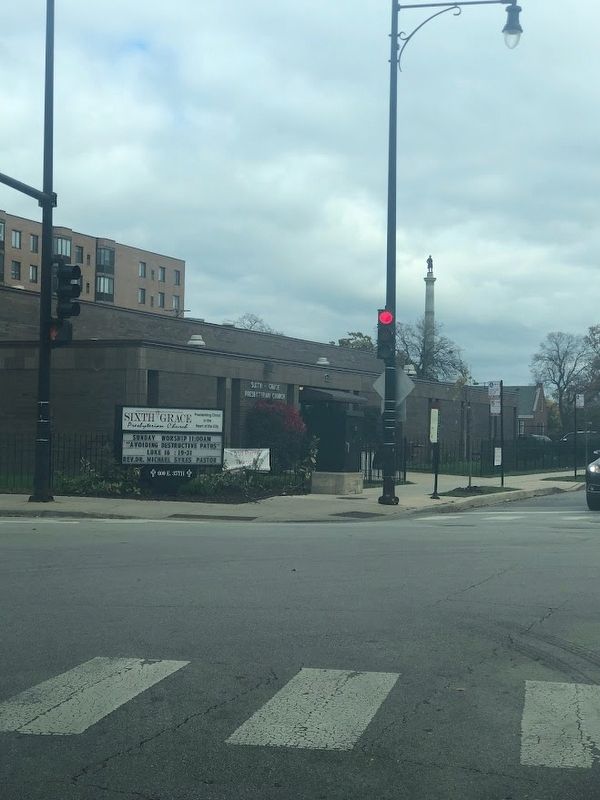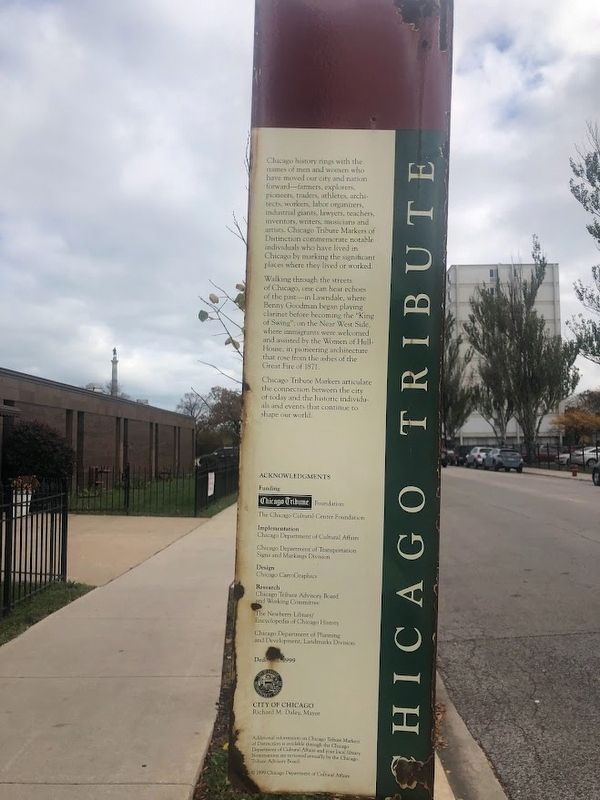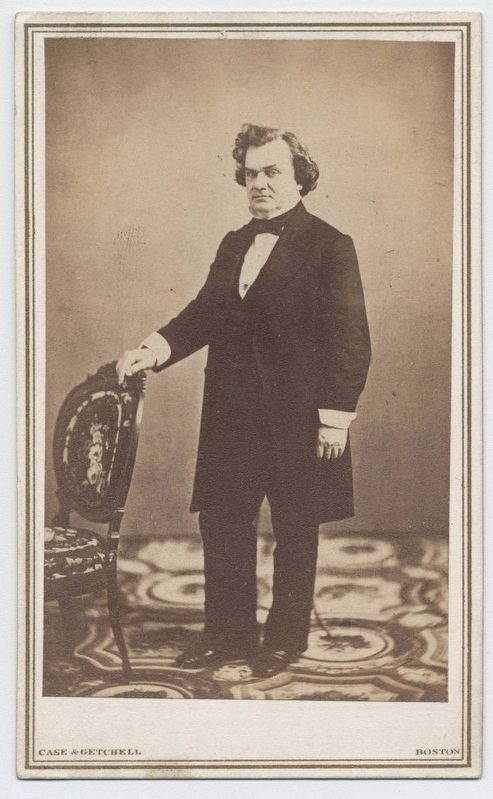Bronzeville in Chicago in Cook County, Illinois — The American Midwest (Great Lakes)
Stephen Douglas
United States Senator (1813-1861)
— Chicago Tribute —
In the Senate, he advocated western development and the continued expansion of the United States. As slavery divided the nation, Douglas sought to engineer political solutions such as the Compromise of 1850 and the Kansas-Nebraska Act of 1854. He articulated a doctrine of “popular sovereignty,” which held that the people of the western territories should themselves decide whether slavery would be permitted. His position became difficult to maintain by the time of the 1858 Lincoln-Douglas debates. When the Civil War shattered his compromises in 1861, he supported the Union.
In Chicago, Douglas was a land speculator and civic leader. He bought thousands of acres on the South and West Sides. His most prized property was along the lake shore in what is today the Douglas neighborhood. He donated ten acres of this land to the original University of Chicago, which survived for three decades at this site, 35th Street and Cottage Grove Avenue. During the Civil War, part of Douglas’s land became Camp Douglas, an army camp and prison for Confederate soldiers.
Erected 1999 by City of Chicago.
Topics and series. This historical marker is listed in these topic lists: Abolition & Underground RR • Government & Politics • Settlements & Settlers • War, US Civil. In addition, it is included in the Chicago Tribute series list. A significant historical year for this entry is 1847.
Location. 41° 49.875′ N, 87° 36.629′ W. Marker is in Chicago, Illinois, in Cook County. It is in Bronzeville. Marker is on 35th Street near Cottage Grove Avenue, on the right when traveling west. The marker is at the northeast corner of the intersection, in front of Sixth Grace Presbyterian Church. Touch for map. Marker is in this post office area: Chicago IL 60616, United States of America. Touch for directions.
Other nearby markers. At least 8 other markers are within walking distance of this marker. Stephen Arnold Douglas (about 500 feet away, measured in a direct line); Stephen A. Douglas: Douglas and Lincoln (about 600 feet away); Stephen A. Douglas: The Chicago Years (about 600 feet away); Stephen A. Douglas: The Douglas Tomb (about 600 feet away); Stephen A. Douglas Memorial (about 600 feet away); The Great Migration Centennial, 1916-2016 (about 600 feet away); Ida B. Wells-Barnett (approx. 0.3 miles away); Supreme Life Building (approx. 0.3 miles away). Touch for a list and map of all markers in Chicago.
More about this marker. The marker is severely corroded, with rust showing many spots, but it is mostly readable. Douglas's Tomb, featuring an obelisk with his statue at the top, rises above the neighborhood from its spot about 200 yards to the east of here.
Regarding Stephen Douglas. Stephen A. Douglas, the U.S. Senator from Illinois and famous rival of Abraham Lincoln, moved to the growing city of Chicago in 1847 and owned thousands of acres of land here in the final 14 years of his life. He owned the land in this area, where this marker and his tomb stand today, and which makes up the Douglas neighborhood, part of Chicago's larger Bronzeville neighborhood. Several acres of land at this spot were donated to local Baptists for the old University of Chicago, an unrelated predecessor to the current university that closed in the 1880s. After Douglas's death in 1861, part of his land to the south of here became Camp Douglas, a U.S. army camp that eventually became a prison for Confederate prisoners of war.
While this immediate area includes his tomb and many markers as well as the Douglas neighborhood name, memorials to the former senator have slowly dwindled over the years due to his stance on slavery--not to mention his old land-holdings' emergence as one of the country's most famous Black neighborhoods. In 2020, in the wake of George
Floyd's murder, the current University of Chicago (about 20 blocks to the south) removed a plaque and a stone dedicated to Douglas that had been erected about 95 years earlier. Later that year, Douglas Park, in a predominantly Black neighborhood on the city's west side, was renamed after Frederick and Anna Douglass.
Credits. This page was last revised on October 31, 2023. It was originally submitted on October 29, 2023, by Sean Flynn of Oak Park, Illinois. This page has been viewed 58 times since then and 20 times this year. Photos: 1, 2, 3, 4. submitted on October 29, 2023, by Sean Flynn of Oak Park, Illinois. • Andrew Ruppenstein was the editor who published this page.



